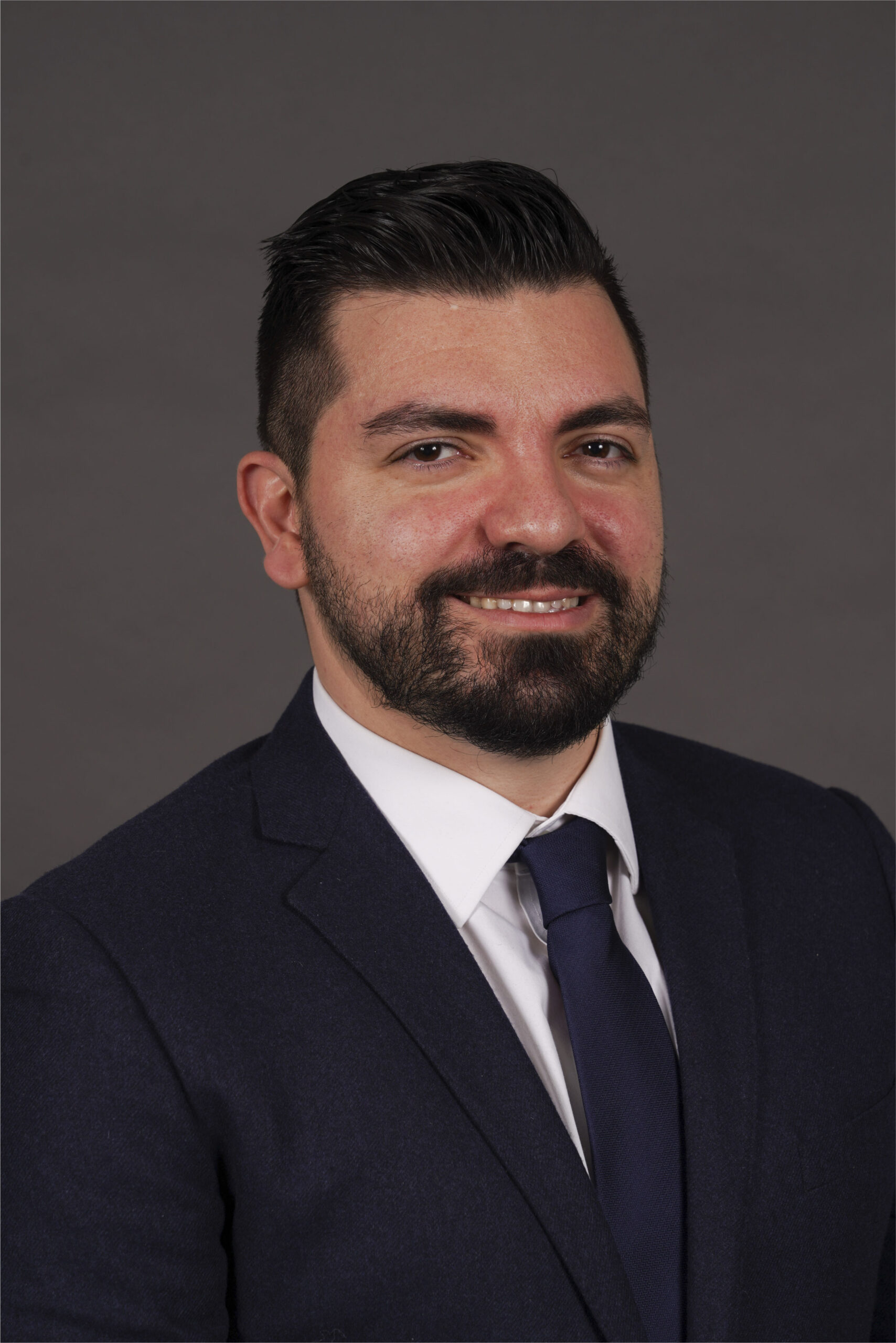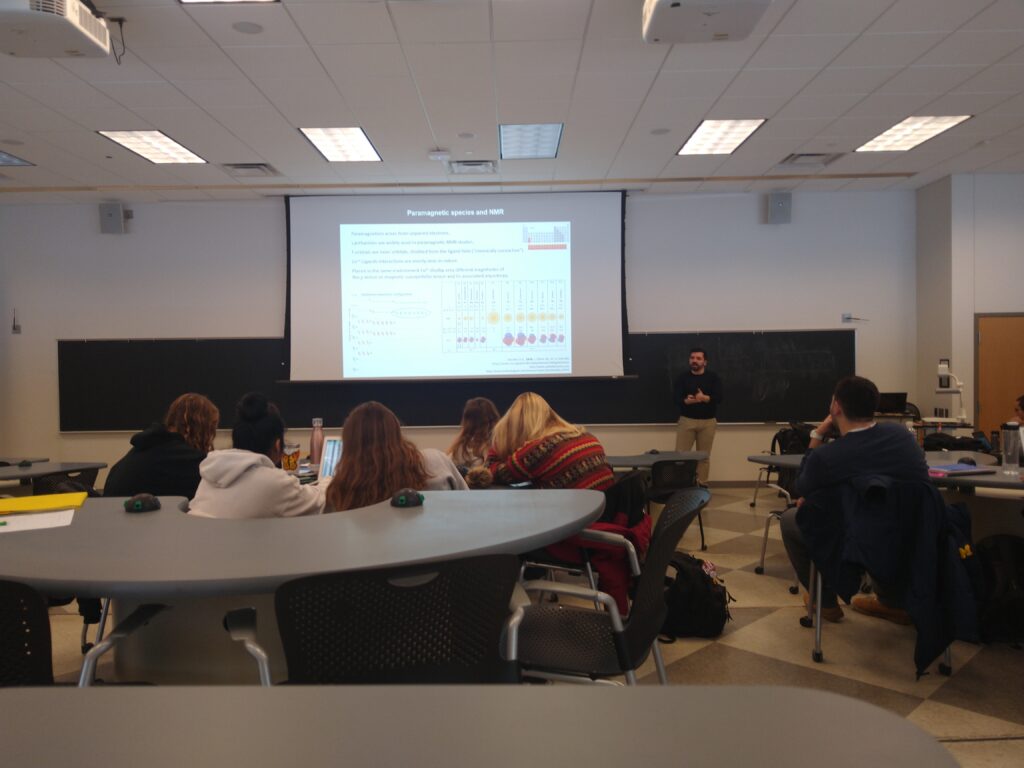With research expenditures surpassing $1 billion, the advancement of interdisciplinary knowledge is central to the mission of the University of Michigan. Research initiatives permeate each of the 19 schools and colleges within the university, and firmly positions U-M as a top public research institution. It was this sparkling reputation, combined with a plethora of graduate opportunities that drew Dr. Giacomo Di Mauro to Ann Arbor from Italy. After graduating from the University of Catania, Sicily, with a Masters of Science in chemistry he relocated to the United States to earn his Michigan PhD in Materials and Physical Chemistry, along with the CFE Graduate Certificate in Entrepreneurship.
 Giacomo has spent countless hours studying the design, synthesis, and characterization of polymer-lipid nanomaterials to further investigate membrane proteins with the Ramamoorthy Group. Every cell in the human body is encapsulated by a membrane called the phospholipid bilayer. This bilayer is the equivalent of a gated fence: it keeps essential nutrients and materials inside the cell, while allowing waste products to leave via channel proteins or through exocytosis. The bilayer membrane is decorated with many other components, which may include cholesterols, integral proteins, carrier proteins, and glycolipids.
Giacomo has spent countless hours studying the design, synthesis, and characterization of polymer-lipid nanomaterials to further investigate membrane proteins with the Ramamoorthy Group. Every cell in the human body is encapsulated by a membrane called the phospholipid bilayer. This bilayer is the equivalent of a gated fence: it keeps essential nutrients and materials inside the cell, while allowing waste products to leave via channel proteins or through exocytosis. The bilayer membrane is decorated with many other components, which may include cholesterols, integral proteins, carrier proteins, and glycolipids.
“All human cells are covered in these membranes and host proteins that can be susceptible to diseases, and targeted by medicinal drugs.”
The phospholipid bilayer can be simulated in a lab environment through a wide variety of techniques. One method utilizes a phospholipid bilayer patch, stabilized by synthetic copolymers; These are called polymer nanodiscs, and are crucial to Giacomo’s research and thesis.
“I synthesize these membrane materials to simulate the cellular environment, so we can better investigate membrane proteins,” he explained. “Essentially, we use synthetic nanomaterials that simulate a natural environment in our cells, and I use nuclear magnetic resonance (NMR) spectroscopy to study these interactions in a faster way.”
The first paper on this topic was published in 2009, but Giacomo contributes to the evolution of materials chemistry by using nanoparticles to accelerate NMR data acquisition. His thesis, which he successfully defended in December 2020, is entitled “Lipid Nanodiscs formed by Paramagnetic Metal Chelated Polymer for Fast NMR Data Acquisition.” His research can be applied everywhere from the beauty industry, to medicine and pharmacology, to accelerating the rates of future experimental chemistry research.
 “There are a wide variety of applications ranging from cosmetics to pharmaceuticals, and these nanoparticles can also be used as a carrier for drug delivery,” he said.
“There are a wide variety of applications ranging from cosmetics to pharmaceuticals, and these nanoparticles can also be used as a carrier for drug delivery,” he said.
Eventually, further research on these polymer-lipid nanoparticles could be monetized in any one of these multi-billion dollar, essential industries. Giacomo is establishing a prolific, prosperous career as a research scientist and polymer specialist, with many more discoveries yet to come. These innovations could change the world, and will one day require careful intellectual protections.
“I wanted to see if there was a way for me to file a patent without facing obstacles and issues I had encountered in the past. So I took the course, and it opened up a new world,” he said.
The promise of securing his hard work with patents and honing the business side of innovation drew him to entrepreneurship, and led him to pursue the CFE’s Graduate Certificate in Entrepreneurship to supplement his PhD. Leveraging patent law as a point of entry, he took a broad array of courses including Project Management, Interpersonal Skills, Finding Your Venture, and Intro to Innovation Careers. Between these courses, Giacomo has explored everything from emotional intelligence theory to leadership skills, which ultimately provide an indispensable platform for future career maneuvers. Entrepreneurship brought Giacomo to new spheres, and connected him with people outside of the chemistry department.
 “I found myself in an academically diverse environment. I’m a chemist, but I was rubbing shoulders with physicists, biologists, biophysicists, so it was quite interesting…”
“I found myself in an academically diverse environment. I’m a chemist, but I was rubbing shoulders with physicists, biologists, biophysicists, so it was quite interesting…”
In addition to meeting people from myriad natural science backgrounds, he was also exposed to innovation from a business lens.
“As a scientist, you cannot neglect the business side of discovery,” he said. “Your job is to advance your field, but you need to know how to present it to the wider community.”
Countless startups have been founded at this intersection between advanced scientific discovery and the understanding of greater community needs. Entrepreneurship and science complement each other perfectly, and Giacomo’s academic experience at U-M is a peerless example of such. Currently, he continues his path as a postdoctoral research scientist at Case Western Reserve University. Although his boundless passion for science currently guides his career, he plans to keep an open mind to founding his own venture in the future.
“No matter where I go in the future, I will always be exposed to something new,” he said. “Having an entrepreneurial acumen, especially knowledge about patents and patent law, is a great skill to complement my PhD.”

